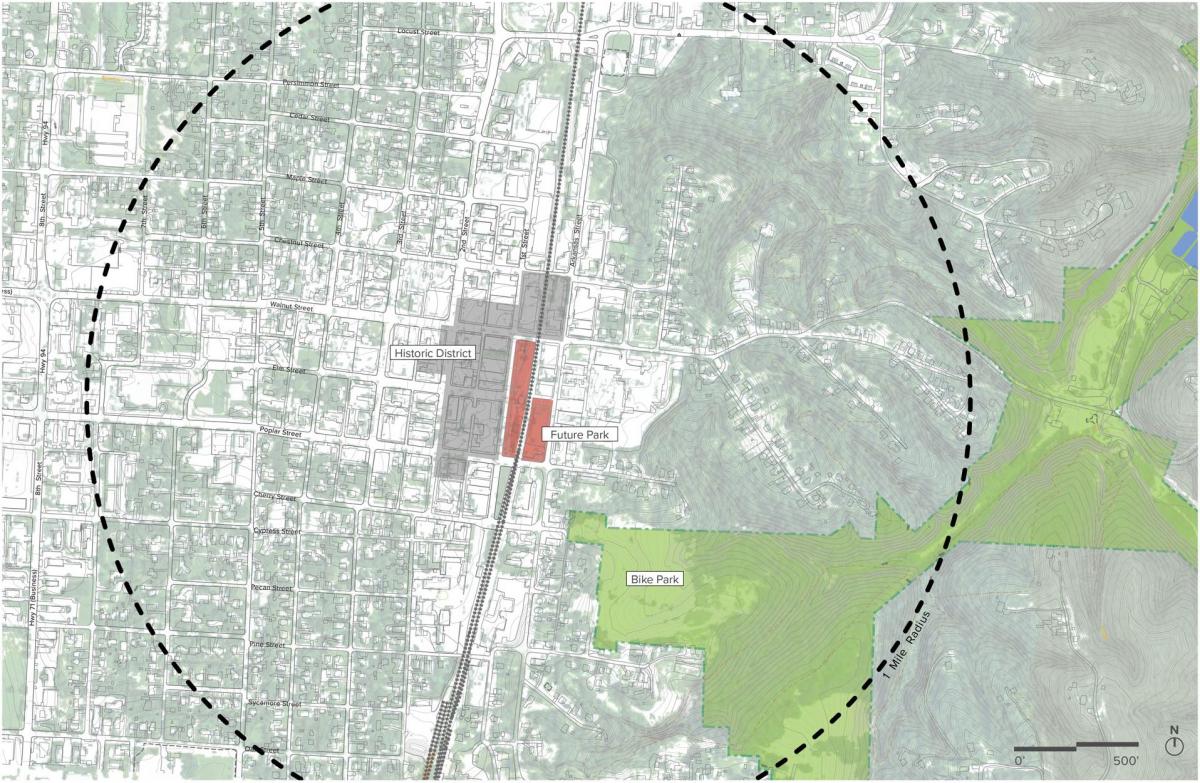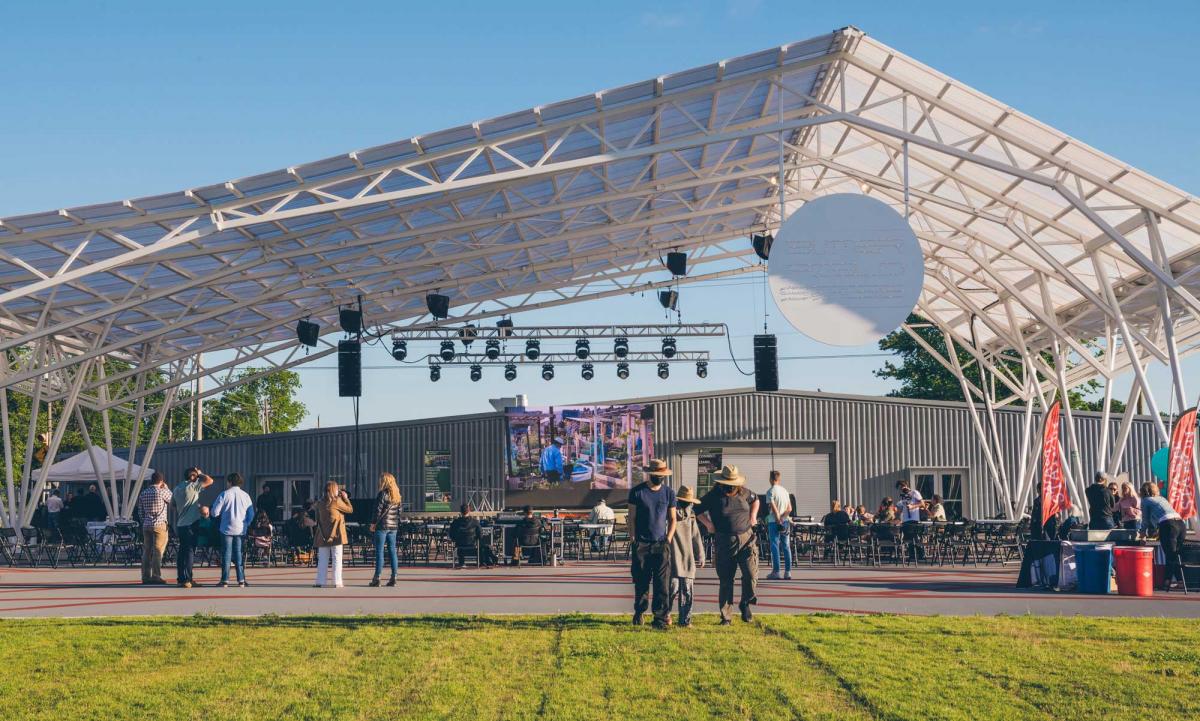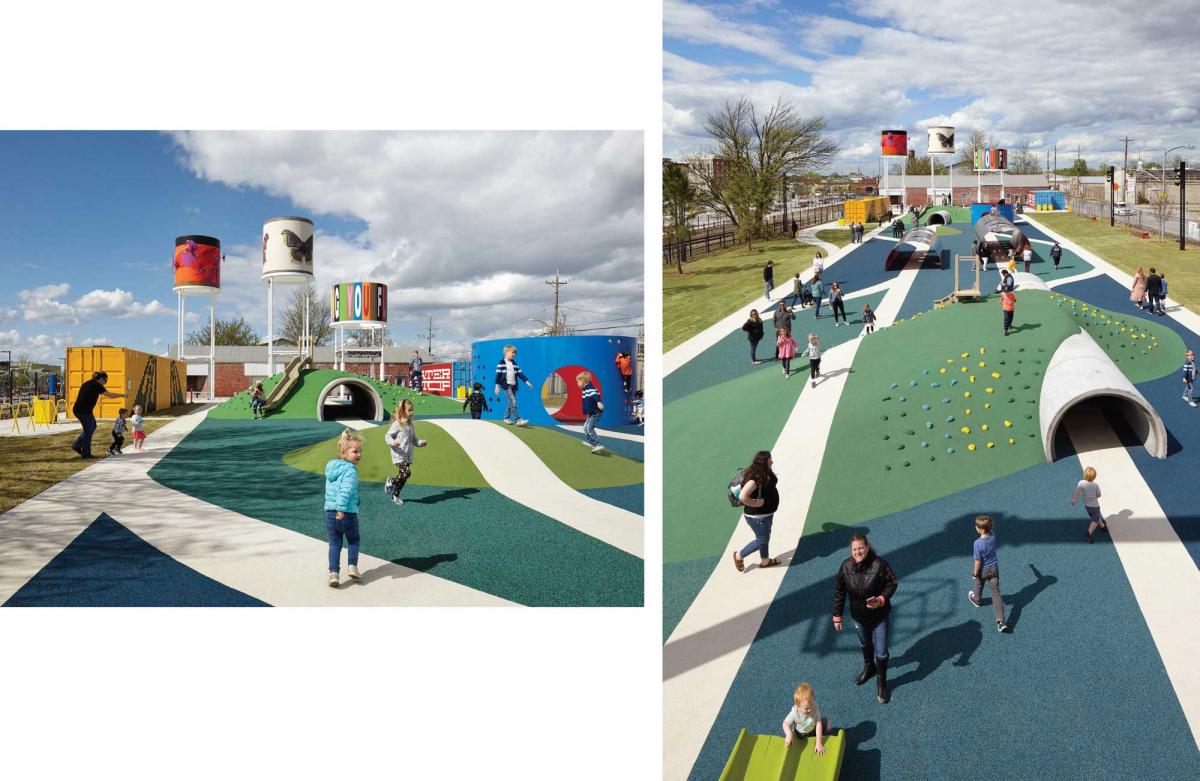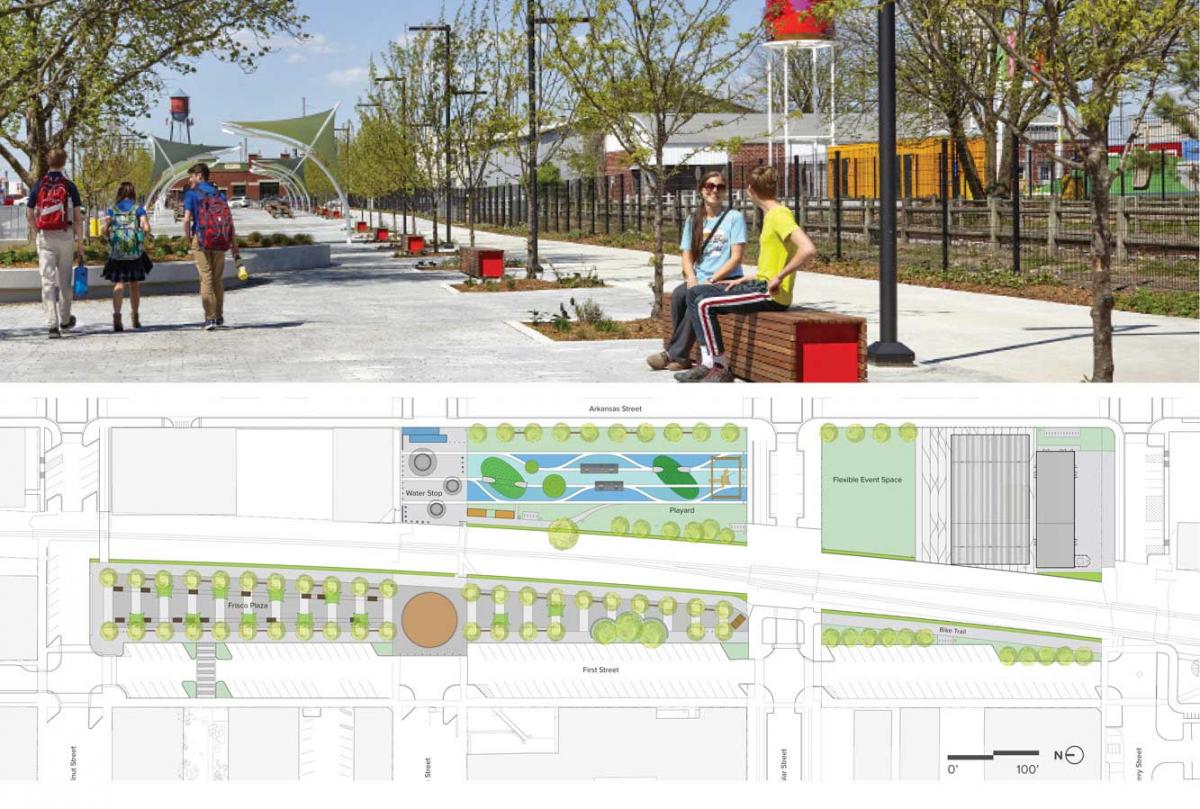
Growing cultural life and mobility in a small city
The City of Rogers was founded as a railroad service depot in Benton County, Arkansas, during the 1880s. In 1950, the town still had only 5,000 people. Nearby, Sam Walton started a retail chain in the 1960s that would spur massive growth and forever change the rural town. Now, Rogers is a small city with a population of about 70,000.
Rogers has a main street that lost businesses due to Walmart, like nearly every main street in America—and the town also experienced significant sprawl in the last five or six decades. Rogers has always lacked a central square or gathering space at the heart of town.
About ten years ago, civic leaders in Rogers and nearby Bentonville, Springdale, and Fayetteville joined together to bring urban amenities to the fast-growing region and attract employees for regional Fortune 500 companies that include Walmart, Tyson Foods, and J.B. Hunt Transportation Services.

If these small cities continued on their path, the formless sprawl engulfing Northwest Arkansas would have stifled economic growth and recruitment. Planning was initiated for cultural growth, attractive civic spaces, and active transportation like walking and biking. Railyard Park in downtown Rogers epitomizes this regional effort.
The 5-acre park was completed in 2021 with a grant from the Walton Family Foundation, which has funded many efforts to bring urban culture to the region. Ross Barney Architects of Chicago designed the public space.

Historically, the site was too narrow for development and not quite wide enough for a town square, the designers explain. Now, Railyard Park integrates a flexible plaza, event space, farmers market building, water park, playground, and bike trail connected to a regional network. In addition, it incorporates an active existing rail line and significant public art installations. A visitor to the park may experience multiple distinct but unified spaces. While listening to performances, parents can watch children play in the exceptional playground, for example. Similarly, people hanging out at the plaza can enjoy music within a stone’s throw of multiple facilities.
The park is the site of monumental sculptures, the Water Towers, that reference the site’s industrial and railroad history. The park is also part of the city’s civic center, where the fire department headquarters, utility services, city hall, and nonprofits are located—and the towers fit into that utilitarian context. The three Water Towers are canvasses for local and international artists.
The stage combines a reused industrial building and a new structure. “The vernacular building is simple and ubiquitous throughout the country. The new structure complements the old in color and simplicity and plays with asymmetry inspired by its roofline,” the design team explains. The stage houses scheduled performances, such as a concert series, and is the site for impromptu gatherings, protected from the weather.

The park capitalizes on recent public investments in a regional trail system. The Railyard Loop Trail that goes through the park connects downtown Rogers to a regional trail system.
Close collaboration between the city, community, stakeholders, and the designers contributed to the outcome. Robust community engagement generated more than a thousand comments on the design. “We have never had anything nearly this successful in terms of public engagement, and the park was immediately and significantly impactful as a result of that engagement … they set a bar for all future design engagements,” reports John McCurdy, the Director of Community Development for Rogers.
With hot summers inviting people outdoors and requiring protection from the Sun, the Park provides places to sit, tables, and shade, note the designers. Historic commercial buildings frame the Park. “This park carves out a space for community gathering at the heart of downtown,” the designers note.






